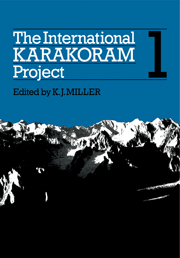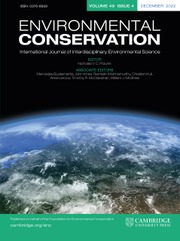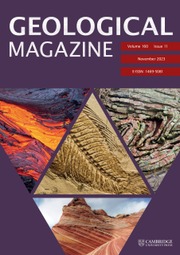Stereographic Projection Techniques for Geologists and Civil Engineers
The stereographic projection is an essential tool in the fields of structural geology and geotechnics, which allows three-dimensional orientation data to be represented and manipulated. This book has been designed to make the subject as accessible as possible. It gives a straightforward and simple introduction to the subject and, by means of examples, illustrations and exercises, encourages the student to visualise the problems in three dimensions. Students of all levels will be able to work through the book and come away with a clear understanding of how to apply these vital techniques. This revised edition contains additional material on geotechnical applications, improved illustrations and links to useful web resources and software programs. It will provide students of geology, rock mechanics, geotechnical and civil engineering with an indispensable guide to the analysis and interpretation of field orientation data.
- Contains many carefully drafted diagrams designed to aid the visualisation of three-dimensional problems
- Divided into short sections making it easy to locate and study a particular technique
- Contains links to useful Web resources and software
Reviews & endorsements
From the reviews of the previous edition: 'This is the book that all teachers of stereographic projections have been waiting for! It contains 115 pages of well-presented, clearly explained, generally well-illustrated text - in short it is user-friendly.' Episodes
'I have been happy to recommend [this book] to undergraduates as a virtually essential purchase, and in the two years of experience of using it since it first appeared it is clear that students concur with this view. [It is] compact, inexpensive, and well structured to meet the needs of students in an area that many find difficult.' Journal of Structural Geology
Product details
April 2004Paperback
9780521535823
124 pages
280 × 210 × 7 mm
0.29kg
257 b/w illus.
Available
Table of Contents
- Preface
- Acknowledgements
- 1. Geological structures of planar type
- 2. Measuring and recording the orientation of planar structures
- 3. Geological structures of linear type
- 4. Measuring and recording the orientation of lines
- 5. Why do we need projections?
- 6. Idea of stereographic projection
- 7. Approximate method of plotting lines and planes
- 8. Exercises 1
- 9. The stereographic net
- 10. Precise method of plotting planes. Great circles and poles
- 11. Precise methods for plotting lines 1. Where the plunge of the line is known
- 12. Precise methods for plotting lines 2. Where the line is known from its pitch
- 13. The intersection of two planes
- 14. Plane containing two lines
- 15. Apparent dip
- 16. The angle between two lines
- 17. The angle between two planes
- 18. The plane that bisects the angle between two planes
- 19. Projecting a line onto a plane
- 20. Stereographic and equal-area projections
- 21. The polar net
- 22. Analysing folds 1. Cylindricity and plunge of axis
- 23. Analysing folds 2. Inter-limb angle and axial surface
- 24. Analysing folds 3. Style of folding
- 25. Analysing folds 4. The orientation of folds
- 26. Folds and cleavage
- 27. Analysing folds with cleavage
- 28. Faults 1. Calculating net slip
- 29. Faults 2. Estimating stress directions
- 30. Cones/small circles
- 31. Plotting a cone
- 32. Rotations about a horizontal axis
- 33. Example of rotation about a horizontal axis. Restoration of tilt of beds
- 34. Example of rotation. Restoring palaeocurrents
- 35. Rotation about an inclined axis
- 36. Example of rotation about an inclined axis. Borehole data
- 37. Density contouring on stereograms
- 38. Superposed folding 1
- 39. Superposed folding 2. Sub-area concept
- 40. Example of analysis of folds. Bristol area
- 41. Geometrical analysis of folds. Examples from SW England
- 42. Example of analysis of jointing. Glamorgan coast
- 43. Geotechnical applications. Rock slope stability
- 44. Assessing plane failure. Frictional resistance
- 45. Assessing plane failure. Daylighting
- 46. Assessing wedge failure
- 47. Exercises 2
- 48. Solutions to exercises
- Appendices
- Availability of computer programs for plotting stereograms
- Further reading
- Index.






